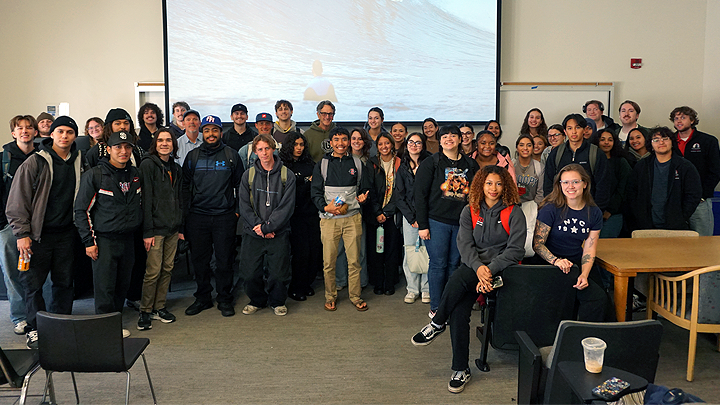San Diego, Tijuana high schoolers come to SDSU to explore border diplomacy
Organized by the San Diego Diplomacy Council, first ever Binational Youth Summit urges collaboration to solve cross-border challenges.

With political uproar over migration as a backdrop, 220 local high school students and teachers from both sides of the border came to San Diego State University last week to probe international challenges and inspire the next generation of global leaders.
The inaugural Binational Youth Summit, organized by the San Diego Diplomacy Council, attracted participants from nine San Diego high schools and 11 schools in Tijuana.
U.S. Consul General for Tijuana Thomas Reott and Mexico’s Consul General for San Diego Alicia Kerber kicked off the event. International educators from SDSU, the State Department, and the San Diego Unified School District urged students to embrace bilingualism and cross-border collaboration.
“We need to celebrate that some of you are binational, some of you are bilingual, and recognize the power you bring,” said Cristina Alfaro, SDSU’s associate vice president of International Affairs. “It shows that you have learned about the realities of living in a border region. Listen to all the possibilities and opportunities you have living in this region.”
The San Diego Diplomacy Council, a non-profit, is one of the 90-plus nationwide organizations designated by the State Department to deliver international programs and services. At the conference, sessions covered binational business, the region’s shared environment, and civic engagement.
It also included a track of breakouts designed to equip teachers with tools and personal connections to help them facilitate more international content and diplomacy simulations in their classrooms.
“There was definitely a lot of interest from both sides of the border, and we would love to run it again next year, possibly in Tijuana, as we think it is valuable and worthwhile for our region and our youth,” said Heidi Knuff, executive director of the diplomacy council.
Tijuana educator Luis Alan Sarellano Llanos said discussions on the region’s ecology, especially run-off pollution from recent rainstorms, “made us realize we are more connected than we think; that our problems are their problems, and we can come up with solutions together.”
For students, the conference at SDSU’s Montezuma Hall was about leadership skills and exposure to careers in international affairs, international business, and diplomacy.
Wendy Gillespie, a bilingual international entrepreneur and philanthropist, led breakout sessions on binational business, walking between tables as she engaged students. She is the namesake donor for the Wendy Gillespie Center for Advancing Global Business in SDSU’s Fowler College of Business.

Entrepreneur and philanthropist Wendy Gillespie urged students to prepare for big opportunities coming to the region. (Credit Nik Hoffman)
More goods and supply chains are shifting back to North America from China following the pandemic, she told students. “There is a huge opportunity in our region,” she said, stressing that gaining global skills will shape future careers.
For students, however, the fun came as they were immersed in a diplomacy simulation, involving a cross-border refugee crisis. Breaking into groups, representing key international stakeholders, they roleplayed as diplomats for the countries directly in conflict, the United Nations, global powers including the U.S., and a non-governmental aid agency representing the plight of refugees.
Leah Vickery, a sophomore at High Tech High in Point Loma, liked the summit because it took a project-based approach to learning, just like in her high school. “We are very used to presentations and discussions,” she said. “Having those communication skills is something we can work on with the people here.”
Mark Ballam, managing director of SDSU’s Gillespie Center at the Fowler College of Business and board president of the San Diego Diplomacy Council, hopes the conference gets students excited about higher education and international careers.
“From our perspective, it is good to get high school students on our campus, or any university campus, so they can begin to see themselves here,” he said. “It is not as scary. They can strive for it.”



